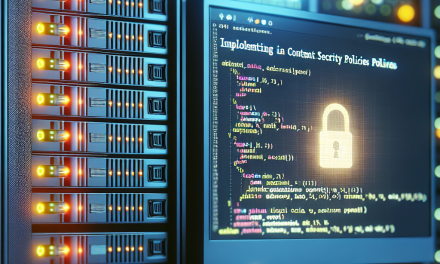Introduction
As the adoption of Btrfs (B-tree file system) continues to grow due to its advanced features like snapshots, subvolumes, and built-in RAID, the need for effective monitoring practices becomes critical. To ensure optimal performance and reliability, especially in production environments, it’s essential to monitor Btrfs for anomalies. This article will explore the best practices for monitoring Btrfs on Linux servers, helping you maintain a healthy file system and prevent data loss.
Understanding Btrfs Features
Before diving into monitoring practices, it’s important to understand the key features of Btrfs:
-
Snapshots: Btrfs allows you to create snapshots that preserve the state of the file system at a particular time, enabling easy rollbacks.
-
Subvolumes: These are separate file system entities that can be managed independently, allowing for better organization and resource management.
-
Dynamic Disk Management: Btrfs supports volumes that can grow and shrink dynamically, providing flexibility in storage management.
-
RAID: The built-in RAID functionality offers various levels of redundancy and performance.
While these features enhance Btrfs’s capabilities, they require vigilant monitoring to mitigate the risks of anomalies.
Signs of Btrfs Anomalies
Recognizing anomalies in Btrfs helps prevent critical issues before they escalate. Some signs to watch for include:
- Unusual I/O Performance: Slow read/write speeds or increased latency may indicate underlying problems.
- Corruption Warning: Messages related to data integrity or corruption in system logs require immediate attention.
- Snapshot Failures: Failures in creating, deleting, or reverting snapshots.
- Threshold Violations: When pools of storage reach high usage percentages, it can lead to performance degradation.
- Errors in Balance Operations: Problems during balance operations can signal issues in the underlying disk structure.
Best Practices for Monitoring Btrfs
-
Log Monitoring
Continuously monitor system logs for Btrfs messages. Use commands such as:
bash
journalctl -f -p err -t btrfsThis command will help track errors and warnings generated by the Btrfs subsystem.
-
Utilize Btrfs Tools
Utilize built-in Btrfs tools to perform regular checks and gather statistics:
- btrfs scrub: This command checks data integrity and repairs bad sectors.
bash
btrfs scrub start /mnt/your_btrfs_volume- btrfs check: For in-depth checks of file system health.
bash
btrfs check /dev/sdX -
Monitor Disk Usage
Use tools like
btrfs filesystem duandbtrfs filesystem dfto monitor the space used by subvolumes and snapshots.bash
btrfs filesystem du -s /mnt/your_btrfs_volumeSetting alerts for high usage can preempt performance degradation.
-
Automate Scrubs with Cron
Schedule scrubs regularly to ensure data integrity without manual intervention:
bash
echo “0 2 0 root btrfs scrub start /mnt/your_btrfs_volume” >> /etc/crontabThis cron job runs a scrub every Sunday at 2 AM.
-
Snapshot Management and Monitoring
Automate snapshot creation and retention using scripts. Regularly check the number of snapshots and their ages to prevent overconsumption of disk space.
bash
btrfs subvolume list /mnt/your_btrfs_volume -
Use Monitoring Tools
Implement monitoring tools like
Nagios,Zabbix, orPrometheuswith custom scripts to alert on Btrfs-specific events. Monitoring tools can provide dashboards, notifications, and trend analyses in real-time. -
Regular Backups
Always maintain an up-to-date backup strategy, as anomalies may not be detected immediately. Use Btrfs’s snapshot feature to create backups without affecting running applications:
bash
btrfs subvolume snapshot /mnt/your_btrfs_volume /mnt/backup_snapshot -
Document Your Configuration
Keep records of your Btrfs configuration and changes. Documentation aids understanding when diagnosing issues and serves as a baseline for monitoring performance.
Conclusion
Monitoring Btrfs for anomalies is essential for maintaining a reliable and performant Linux server environment. By implementing the best practices outlined in this article, you can proactively manage Btrfs file systems, ensuring data integrity and availability. Regular monitoring, combined with vigilant checks and a robust backup strategy, will empower you to harness the full potential of Btrfs while minimizing risks.
To stay updated with the latest in technology and system management, follow the WafaTech blog for more insightful articles.





